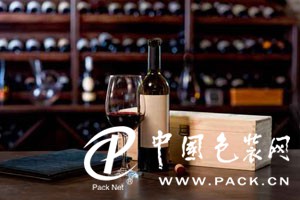[China Packaging Network News] In recent years, with the continuous advancement of technology, wine production—from brewing to packaging—has become more digitized and controllable. Additionally, as e-commerce systems continue to penetrate the wine industry, the adoption of these new technologies is becoming inevitable. This shift aims to bring truly personalized custom wines into millions of households.

What are the opportunities for personalized wine packaging?
1. Personalization and diversified consumption are becoming mainstream
The current main consumer group for customized wines is the new generation of SoLoMoPe (Social, Local, Mobile, and Personalized) consumers born after the 80s and 90s. These individuals represent the largest consumer base. Their behavioral traits include social interaction, local preferences, mobile usage, and a strong desire for personalization. This means that alcoholic beverage brands must adapt by offering tailored experiences across social media, full sales channels, and throughout the consumer’s daily life. Personalized demand is mainly reflected in three areas:
(1) Full participation through interactive engagement. For personalized wine packaging, it involves presenting customized graphics and text, such as logos, images, or messages, on physical products to create a sense of ownership and involvement.
(2) A sense of belonging within specific communities. The internet can quickly gather like-minded individuals, and people within a particular circle naturally develop shared preferences. Personalized wine packaging can symbolize this identity, serve as a gift, and even build a culture. For example, some universities have their own branded wines, and certain organizations also produce unique wines for internal use.
(3) Shareable, engaging, and timely content. For instance, Jiang Xiaobai's alcohol bottles feature labels that allow consumers to share interesting stories about the drinks on social platforms like WeChat and Weibo, enhancing brand visibility and user engagement.
2. Major changes brought by the Internet
The internet has transformed not only how people think and live but also how businesses operate. It enables direct connections between users and products, revolutionizing traditional distribution models. Brewmaster, for example, was among the first to solve the issue of connecting wineries directly with consumers, bypassing traditional local distributors.
Moreover, the internet allows businesses to quickly understand and respond to user needs, creating a powerful fan effect. The closer a business is to its end users, the more valuable it becomes, and the easier it is to control the supply chain. Jiang Xiaobai, for instance, uses online platforms to gather users and create a loyal fan base, aligning its marketing strategies with the consumption habits of the younger generation.
When new consumer behaviors meet the power of the internet, the real C2B (Consumer to Business) model emerges, marking the true beginning of an individualized consumption era. As a result, the wine industry will be at the forefront of this transformation, and personalized wine packaging is set to become the next big market trend.
What are the challenges of personalized wine packaging?
The biggest challenge lies in balancing personalized customization with mass production, and building a robust digital marketing system based on the internet.
Personalized wine packaging must possess three key features: low order thresholds, allowing even single bottles to be customized; affordable costs, keeping them close to standard bulk packaging prices; and fast delivery times, typically within five days. These requirements demand high levels of automation, production flexibility, and efficient order management systems.
Although these standards are high, recent advancements in digital printing solutions have made the production process much more feasible. The HP Indigo 30000 digital press is widely used to fulfill personalized printing needs. Combined with automated die-cutting and hot stamping machines, Gaudi Digital Synergy Printing Machines, and Kama Digital Intelligent Sticking Box Platforms, the entire process from printing to post-processing and shaping becomes seamless. An intelligent personalized wine packaging system typically occupies 300–500 square meters and can be managed by 5–10 workers. It supports full-process barcode and JDF control, enabling high flexibility and zero waste, capable of handling orders ranging from one to tens of thousands of wine boxes.
Regarding the development of an internet-based personalized marketing software system, it requires careful design tailored to each wine brand. DIY systems and bar code generation tools related to packaging production are already mature on both desktop and mobile platforms. Integrating these into a comprehensive marketing ecosystem ensures smooth operations and enhanced customer experience.
Garden Pot,Plant Pots,Flower Pots,Outdoor Plant Pots
Yixing Bocai Pottery Co.,Ltd , https://www.bocaipottery.com